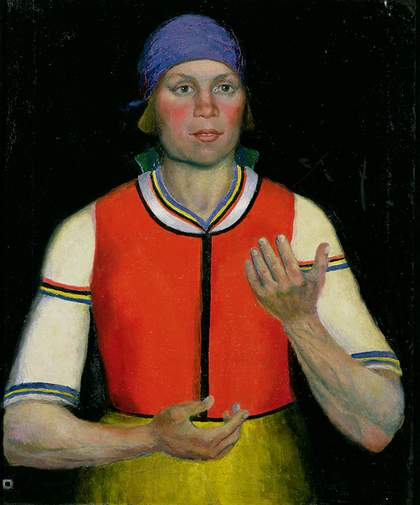
Kazimir Malevich Woman Worker 1933
© Centre Pompidou, MNAM-CCI, Dist. RMN-Grand Palais / Jacques Faujour
It seems to me that anyone would find the hand gesture of the character in Malevich’s Woman Worker 1933 incomprehensible and frankly puzzling. Judging from the title of the painting and the face of the woman herself, it would appear to suggest something connected with production, but the positioning of both hands cannot be associated with any craft. None the less, the gesture is portrayed very precisely and demonstratively, and clashes with the simple, neutral depiction of her ‘work-weary’ hands.
My hypothesis is that the pose would be perfectly natural in a picture of a mother holding her child. You have only to let your imagination overlay the Madonna and Child on this painting for the inference to become obvious. If I am correct, then Malevich’s portrait becomes a most profound image because of its tragic nature - the depiction of a mother who has had her child taken away.
Given this interpretation, the work ceases to be a concession by the great experimenter to the new circumstances of life and takes on the significance of an absolute sign, a symbol of what was going on around him during those years, an image no less powerful and terrible than Black Square 1915.

